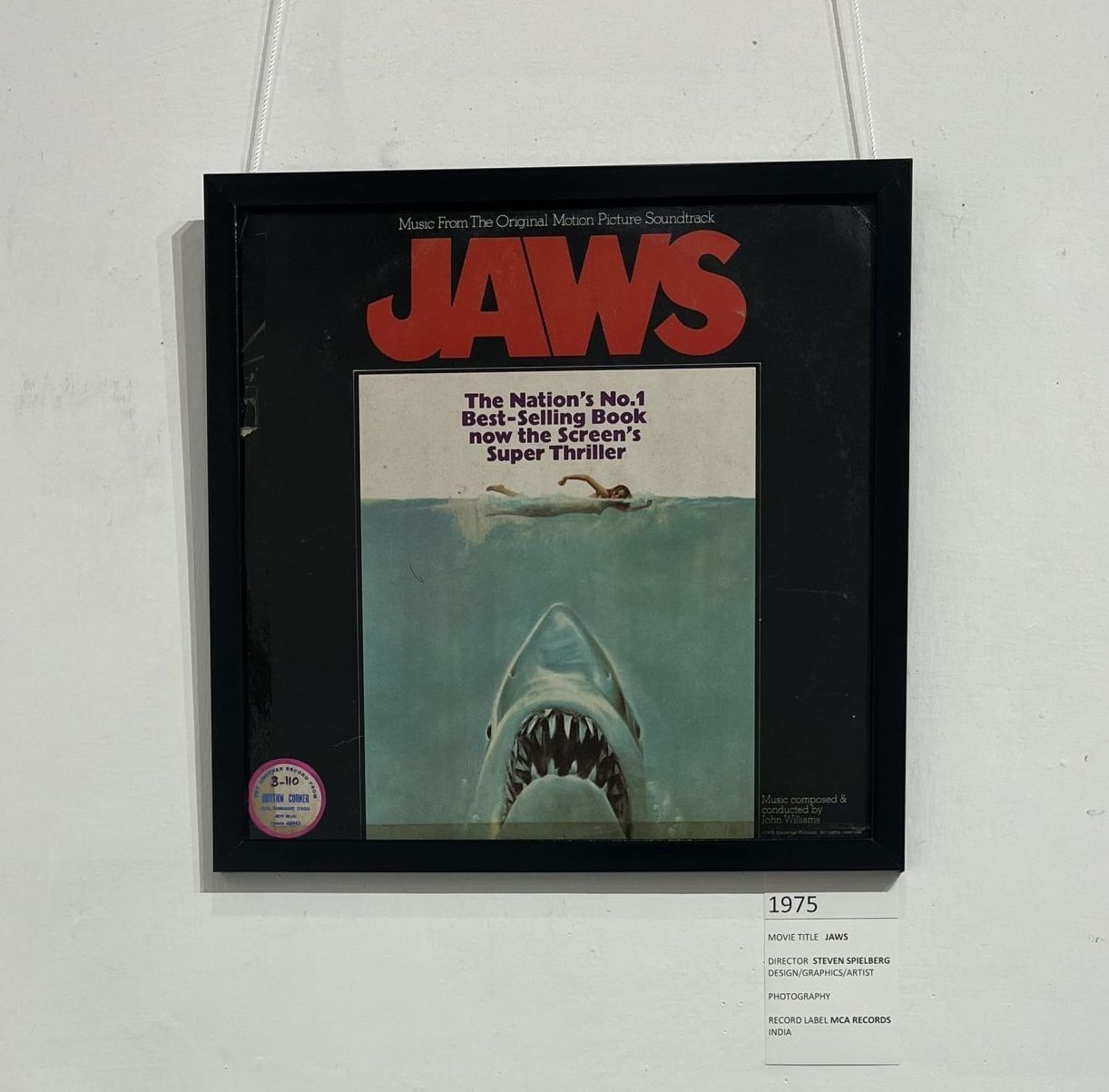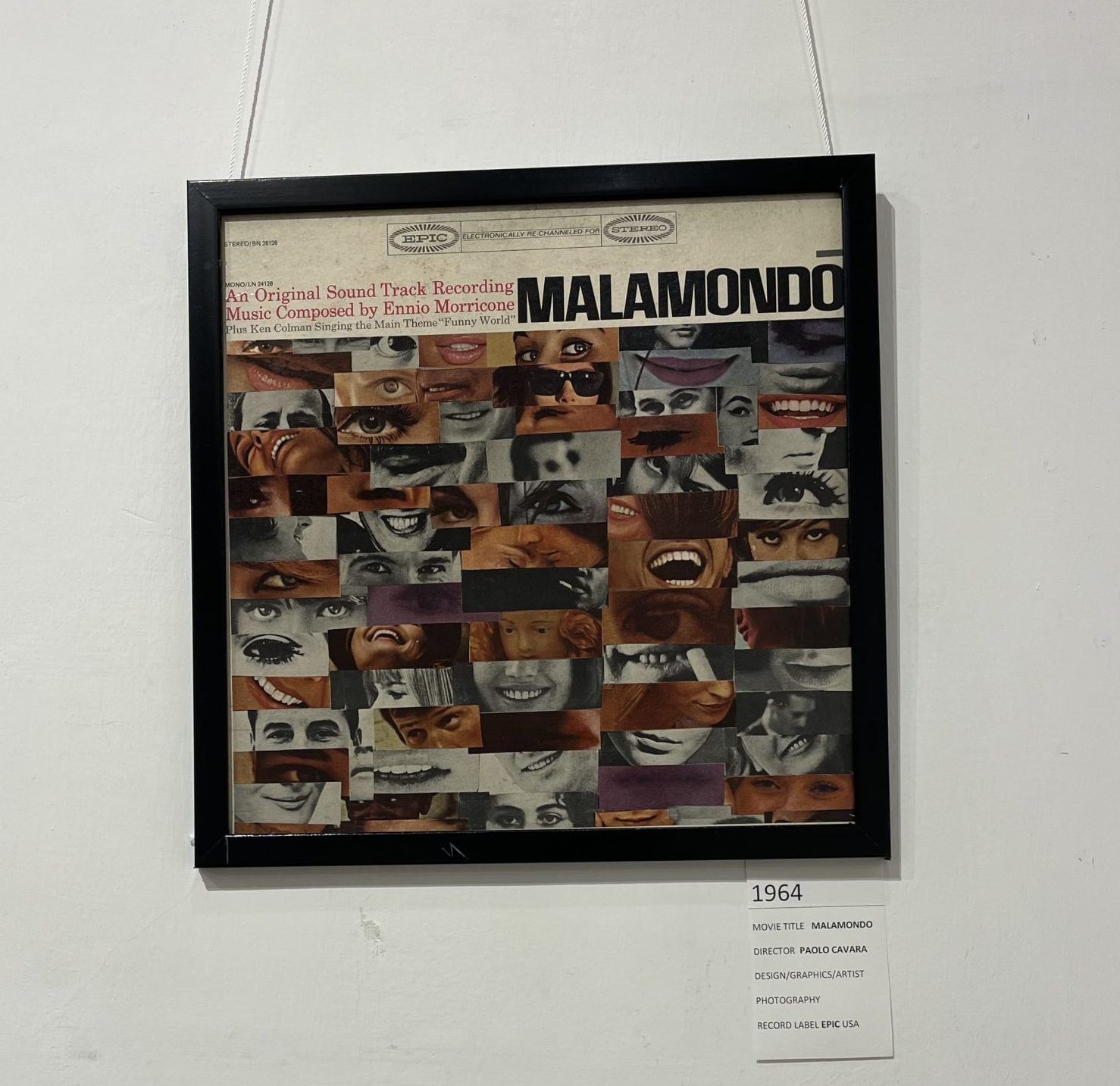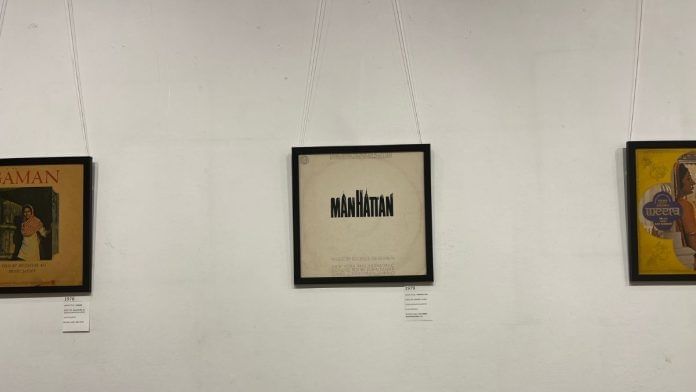New Delhi: Arunabha Ghosh’s collection boasts of 10,000 records — they’re spread across his first floor home and have been lovingly conserved over decades. He’s offered up a minor section of his riches for an exhibition at Delhi’s India International Centre, which maps out film history and visual cultures through the album covers of film soundtracks.
Titled Vinyl Visions, the exhibition, curated by Munjarita Mondal, places the spotlight on an element of film culture that is seldom paid attention to and appears to be disappearing from collective memory. While vinyls are seeing a resurgence — with nostalgia becoming an aesthetic — the content and the art on display isn’t given the same treatment.
“For me it wasn’t about the music, but about the covers,” said Ghosh. “So I began framing and displaying them. Each artist creates covers in a different way.”
An extension of the film
The exhibition doesn’t rely on categorisation. It spans genres and time frames. Steven Spielberg’s epochal Jaws (1975), which has a soundtrack for the ages, has been displayed — the cover uses the signature shark image. Kamal Amrohi’s Pakeezah (1972) also finds pride of place, alongside Last Tango in Paris (1972) and Satyajit Ray’s The Apu Trilogy.
Arranged chronologically, one of the first long-playing (LP) record covers that catches a viewer’s eye belongs to Shakespeare Wallah (1965), whose music was composed by Satyajit Ray. The cover has seemingly intimate photos of Shashi Kapoor and Jennifer Kendal.

In her curatorial note, Mondal explains the purpose behind these covers. They’re supposed to serve as an extension of the film itself — to direct focus toward not just the soundtrack, but the narrative.
“While many film soundtrack covers repurpose iconic film posters, or film stills, some stand out in their thoughtful presentations, creating a haunting entry point into the world of the film,” she said.
The vinyl cover of Satyajit Ray’s Shatranj Ke Khilari (1977) plays with the film’s central motif — chess.
The LP cover of Malamondo, a 1964 documentary which tracks socially illicit behaviour through Europe, has a cacophony of eyes and mouths.
Covers deliberately play with the film’s themes, excavating both known and unknown elements from the film.
“The artwork symbolises the larger geopolitical game being played out in the historical framework the film is based on; the opulent and decadent court of Nawab Wajid Ali Shah,” Mondal said, referring to the cover of Shatranj Ke Khilari.
“The opposing forces at play, the British and the Indian royalty are being represented by the squares.”
The cover was designed not by Ray, whose design acumen was a known fact. The filmmaker is also responsible for the creation of two typefaces. Instead, it was his son Sandip Ray who drew out one of Indian cinema’s most recognisable covers.

Apart from Indian classics, a number of western masterpieces too — both the classic and those which were made more recently — have soundtrack covers that function as homages to the film. A central theme instantly jumps off the artwork. For example, Oliver! (1968) has its titular character looking morose and holding out a bowl. He’s on the verge of asking for more. This is the image most representative of the musical.
Meanwhile, the 1989 version of Batman has a soundtrack designed by singer Prince. The cover is sleek and relatively minimal. It’s taken up almost entirely by the Batman logo.
According to Mondal, film franchises make use of the “iconicity” of their characters and their larger-than-life personas — thereby making film posters and album covers that are “instantly recognisable.”
Also read: From Lahore jail to Bose’s INA—women who fought for India’s freedom but remained forgotten
Ghosh’s collection
At the exhibition, Ghosh looked around the hall, admiring what is admittedly only a small chunk of his collection. He pointed to the vinyl cover of Woody Allen’s 1979 film Manhattan, which consists solely of the film’s title. Using a black, block-like typeface, certain letters have been elevated to resemble buildings of the New York skyline. It’s evocative, “instantly recognisable.”
“Look at the simplicity,” said Ghosh.
Unable to pick a favourite, he’s been collecting covers for nearly four decades. He can map out the change in technology and trends through his covers. In the 1950s and 1960s, artists stuck to block printing — using only 2-3 colours.
Ghosh began building his collection by parsing through old record stores in his hometown of Kolkata, visiting old houses and seeing if the families were willing to sell any of their own records. But the majority of this collection has come from a “private home” in south Mumbai’s Hughes Road.
“This is quite the collection,” said a self-confessed film buff who otherwise works in finance. He skipped a film festival at the India Habitat Centre to visit the exhibition.
The exhibition ended on 1 August.
(Edited by Aamaan Alam Khan)






